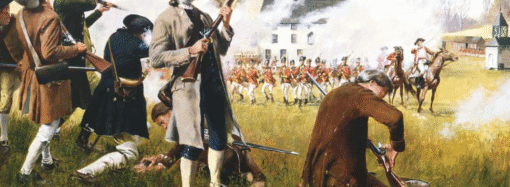Today’s culture rarely references the seven deadly sins rooted in Christianity that had been known to nearly all men of the West for almost 2,000 years. Occasionally, one of the sins may be referenced in pop culture, but to my knowledge the most recent popular reference to them was the movie Seven (1995), a grisly crime and suspense movie starring Brad Pitt and Morgan Freeman.
In the Christian tradition, a sin is, of course, an offense against God and God’s laws perpetrated by an individual. Sin is rooted in the heart of man. As the Catholic Catechism states,
“There are a great many kinds of sins. Scripture provides several lists of them. The Letter to the Galatians contrasts the works of the flesh with the fruit of the Spirit: ‘Now the works of the flesh are plain: fornication, impurity, licentiousness, idolatry, sorcery, enmity, strife, jealousy, anger, selfishness, dissension, factions, envy, drunkenness, carousing, and the like. I warn you, as I warned you before, that those who do such things shall not inherit the Kingdom of God.’”
The Baltimore Catechism, a catechism designed for children, summarizes the seven deadly or ‘capital’ sins in the following way:
“The chief sources of sin are seven: Pride, Covetousness [Avarice], Lust, Anger, Gluttony, Envy, and Sloth, and they are commonly called capital sins. … The seven sources of sin are called capital sins because they rule over our other sins and are the causes of them.”
Here are the definitions for each sin as provided by the Baltimore Catechism:
- Pride: “Pride is an excessive love of our own ability; so that we would rather sinfully disobey than humble ourselves … Pride begets in our souls sinful ambition, vainglory, presumption and hypocrisy.”
- Covetousness [Avarice]: “Covetousness is an excessive desire for worldly things … Covetousness begets in our souls unkindness, dishonesty, deceit and want of charity.”
- Lust: “Lust is an excessive desire for the sinful pleasures forbidden by the Sixth Commandment … Lust begets in our souls a distaste for holy things, a perverted conscience, a hatred for God, and it very frequently leads to a complete loss of faith.”
- Anger: “Anger is an excessive emotion of the mind excited against any person or thing, or it is an excessive desire for revenge … Anger begets in our souls impatience, hatred, irreverence, and too often the habit of cursing.”
- Gluttony: “Gluttony is an excessive desire for food or drink … Drunkenness, dishonesty and impurity seem to cause most evil in the world, and they are therefore to be carefully avoided at all times.”
- Envy: “Envy is a feeling of sorrow at another’s good fortune and joy at the evil which befalls him; as if we ourselves were injured by the good and benefited by the evil that comes to him … Envy begets in the soul a want of charity for our neighbor and produces a spirit of detraction, back-biting and slander.”
- Sloth: “Sloth is a laziness of the mind and body, through which we neglect our duties on account of the labor they require … Sloth begets in the soul a spirit of indifference in our spiritual duties and a disgust for prayer.”
Humorously, even a secular people seem to need the idea of “sin”. While our culture no longer recognizes or even remembers the seven deadly sins of the West’s Christian heritage, we still have sins that no man should violate. Indeed, to violate one of our modern sins is to call down the wrath of friends and coworkers, to draw unwanted media attention, and to even find yourself unemployed. While in the Christian tradition, one merely needs to ask for forgiveness of sin, today there is rarely any forgiveness unless one publicly admits to the sin, denounces it, and commits to never sin again. It’s all rather religious without the religion or the metaphysical belief structure.
Just so you don’t go wrong in modern America, here are the updated seven deadly sins encompassed under the broader notion of “social justice”, with definitions coming from various social justice organizations. What is common to all is that these sins are seen as forms of oppression. The thinking has deep roots in Marxism and the idea that history of composed of class struggle, of the oppressor vs. the oppressed, and that by eliminating these sins we will create an egalitarian world. Once true equality is reached, the belief is that we will see all of the suffering and evil fade away.
- Racism: “Racism is race prejudice plus power. (Definition, by People’s Institute. I use “white supremacy” as a synonym for racism.) … A racist is one who is both privileged and socialized on the basis of race by a white supremacist (racist) system. The term applies to all white people (i.e., people of European descent) living in the United States, regardless of class, gender, religion, culture or sexuality. By this definition, people of color cannot be racists, because as peoples within the U.S. system, they do not have the power to back up their prejudices, hostilities or acts of discrimination.” (YWCA)
- Ableism: “A set of practices and beliefs that assign inferior value (worth) to people who have developmental, emotional, physical or psychiatric disabilities … An ableist society is said to be one that treats non-disabled individuals as the standard of ‘normal living’, which results in public and private places and services, education, and social work that are built to serve ‘standard’ people, thereby inherently excluding those with various disabilities.” (StopAbleism.org)
A form of ableism includes “disability metaphors” such as saying “the debt is crippling”. “The stories that disability metaphors tell are deeply problematic, deeply destructive and deeply resonant of the kinds of violence and oppression that disabled people have faced over the course of many centuries. They perpetuate negative and disempowering views of disabled people, and these views wind their ways into all of the things that most people feel are more important. If a culture’s language is full of pejorative metaphors about a group of people, that culture is not going to see those people as fully entitled to the same housing, employment, medical care, education, access and inclusion as people in a more favored group.” (Huffington Post)
- Sexism: “Sexism is when someone is treated different because of there [sic] sex or gender. Sexism can involve a lot of different issues such as unequal pay to women compared to men, and getting beaten up by there [sic] husbands or wives. Sexism can effect both men and women but women are experiencing it more because in most cultures the man is the one who is dominant.” (Social Justice Issues)
- Ageism: “Ageism is a form of discrimination and prejudice, particularly experienced by seniors. Most seniors are mentally and physically active regardless of age with a great deal to contribute. However, societal norms marginalize seniors, treat them with disrespect, make them feel unwelcome and otherwise generalize as if they were all the same.For example:
- Late night comedians and talk show hosts joke about seniors and memory loss;
- Doctors often talk past the senior patient to an adult child as if the senior wasn’t even in the room;
- Younger adults mock seniors for being ‘slow’;
- Commercial advertisements depict seniors as out of date, and lacking knowledge about modern culture and new technologies;
- Certain laws and regulations are paternalistic towards seniors and limit their choices.
Ageism robs seniors of choice, independence, dignity and negatively impacts their quality of life.” (ALFA)
- Heterosexism: “Heterosexism is the assumption that all people are heterosexual and that heterosexuality is superior and more desirable than homosexuality or bisexuality. Heterosexism is also the stigmatization, denial and/or denigration of anything non-heterosexual.” (James Madison University)
- Classism: “Classism is differential treatment based on social class or perceived social class. Classism is the systematic oppression of subordinated class groups to advantage and strengthen the dominant class groups. It’s the systematic assignment of characteristics of worth and ability based on social class.” (Class Action)
“It’s almost Bizzaro World how so many extra-sensitive liberals who would never, ever tell a racist joke, and are careful to use the very latest, socially-approved euphemisms for race and sexual preference, have no problem at all stereotyping working poor, working-class white people (i.e. prejudice). What is even more enlightening is that this very same prejudice doesn’t apply to rich white people, who might also be just as racist or ignorant, but are still free of that stereotype by virtue of their wealth. So the crime of the redneck isn’t having white skin. His crime is being poor.” (Daily Kos)
- Bigotry: “Intolerance toward those who hold different opinions from oneself.” (Google) Did you fail to celebrate the diversity of races, religions, cultures, genders, abilities & sexual orientations? Then you’re probably a bigot.
The contrasts between the traditional and the modern sets of deadly sins are fascinating. While both sets judge individual actions, they work toward very different goals and play out in very different ways in society and for individuals. That is due to the competing views of human nature.
The West, rooted in the synthesis of Christianity and Hellenism (Ancient Greek Philosophy), has traditionally viewed man as a being having a divine purpose, though also a “fallen nature”. In other words, we have dignity from God or the “Prime Mover”, but we also have the capacity to do good or evil. For many of the Ancient Greeks as well as the Christians, one of the great purposes of the individual was to work towards a more virtuous state, to work towards holiness.
The social justice view, rooted in the Marxist tradition, sees the world as only a material entity, there is no soul or spirit to man. Everything, therefore, is to be solved not by changing the spirit of the person, but rather by changing the material surroundings or structures of society. If we can eliminate all material barriers to a person’s well-being, we will eliminate what some might call “evil”. All of the faults of people come from imperfect societal structures, not actual evil in the hearts of men. The goal, therefore, is to fix those societal structures in order to create the perfect social order. Doing so may include pushing aside those individuals who may maintain those structures.
The question is, which worldview is actually better for a person to live by and for a society to be grounded upon? And which one is more realistic?















